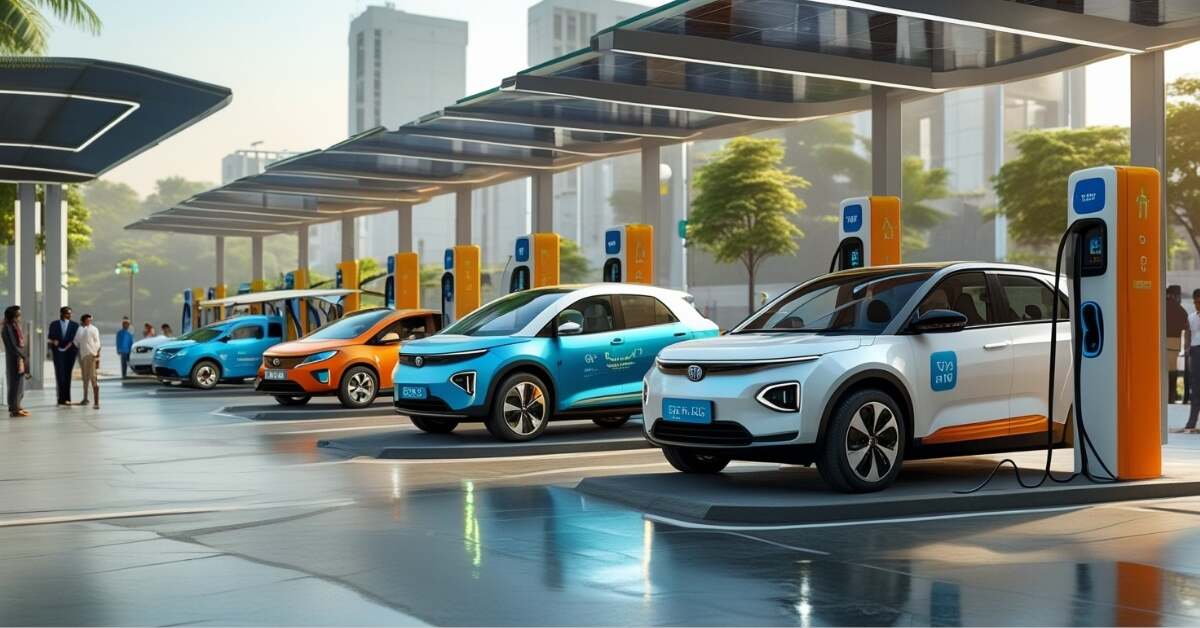The high initial cost of electric cars (EVs) is still a major barrier to widespread adoption in India, even though sales have increased sixfold in only four years.
Rising Sales, Cost Barrier
With more than two million EVs delivered in FY25, India is quickly speeding up the adoption of electric cars (EVs), a sixfold rise in only four years.
Although sales are increasing, their greater initial cost as compared to gasoline-powered cars continues to be a significant barrier to widespread adoption.
As long as the government maintains its 5% GST rate to encourage EVs, EV manufacturers can anticipate more competition from small gasoline and diesel vehicles, which will become more inexpensive due to a 10% GST rate drop.
Innovation Drives EV Affordability
Leading automakers are stepping up their efforts to reduce the cost of EVs by using creative ownership models, specialized platforms, and battery localization. Incentives and subsidies from the government are also significantly lowering the initial cost of EVs.
Also Read: Trains Halt at Punpun Ghat
According to Vivek Srivatsa, chief commercial officer of Tata Passenger Electric Mobility, “pricing is one way to look at the buying power in the market when it comes to India’s EVs category.” “But in reality, a product’s value proposition is the most important consideration when making a purchasing decision.”
The route to affordability: innovation and localization
The price difference between EVs and internal combustion engine (ICE) cars has considerably decreased thanks to Tata Motors, which holds more than 75% of the entry-level EV market.
⚡ EV Adoption & Affordability Highlights
- Rising Sales: 2+ million EVs sold in FY25 → 6× growth in 4 years
- Cost Barrier: EVs still pricier upfront vs. ICE cars
- GST Advantage: 5% on EVs vs. 28% on petrol/diesel cars
- Price Gap Shrinks: Tata Nexon.ev cost gap down from 25% (2020) to just 5%
- Localization: 80% Tier 1 achieved; Tier 2 & Tier 3 in progress
- Battery Costs: 45% of EV price → localization key to parity
- Trust Boosters: Battery-as-a-Service, lifetime warranty, refund plans
- Charging Challenge: Infrastructure growth lags, slowing adoption
“The Nexon.ev‘s acquisition cost was 25% more than that of the comparable ICE car when we introduced it in 2020. With the release of the Nexon.ev 45, this disparity has decreased to barely 5%, according to Srivatsa.
“We furthered this commitment with the Harrier.ev, offering the high-end electric SUV at a price that is equal to or even less expensive than the comparable ICE model,” he said.
Localization Lowers EV Prices
“This increased scale, together with tech advancements in battery chemistry and increasing localization of key components, is already reducing EV pricing at pace with ICE,” said Anurag Mehrotra, MD, JSW MG Motor India.
He went on to say that price parity will not be the only factor driving wider adoption. The development of charging infrastructure and increased consumer awareness of long-term savings will be crucial.
The largest lever in attaining parity is the cost of the battery, which may make up as much as 45% of the price of an EV. The most important lever is still battery localization. “Securing local supply chains and increasing domestic manufacturing would immediately lower prices,” Mehrotra said. Modular designs and specialized EV platforms would further maximize manufacturing efficiency.
Battery Services Build Trust
Additionally, cutting-edge ownership models like battery-as-a-service (BaaS) are crucial. Together with a guaranteed 3- to 60-day refund plan and a lifetime battery warranty, these items have increased customer trust in their durability and resale value.
Srivatsa said that substantial localization and price reductions for batteries and non-cell-related items had helped Tata’s pricing strategy.
Current Tier 1 localization rate: 80%
Company is adding Tier 2 components
Company is adding Tier 3 components
Overall aim: increase localization beyond Tier 1
Infrastructure for charging is still a hurdle, however. “Manufacturers will need to find a balance between providing bigger batteries and keeping entry-level models cost competitive until infrastructure expands up,” Mehrotra said.

